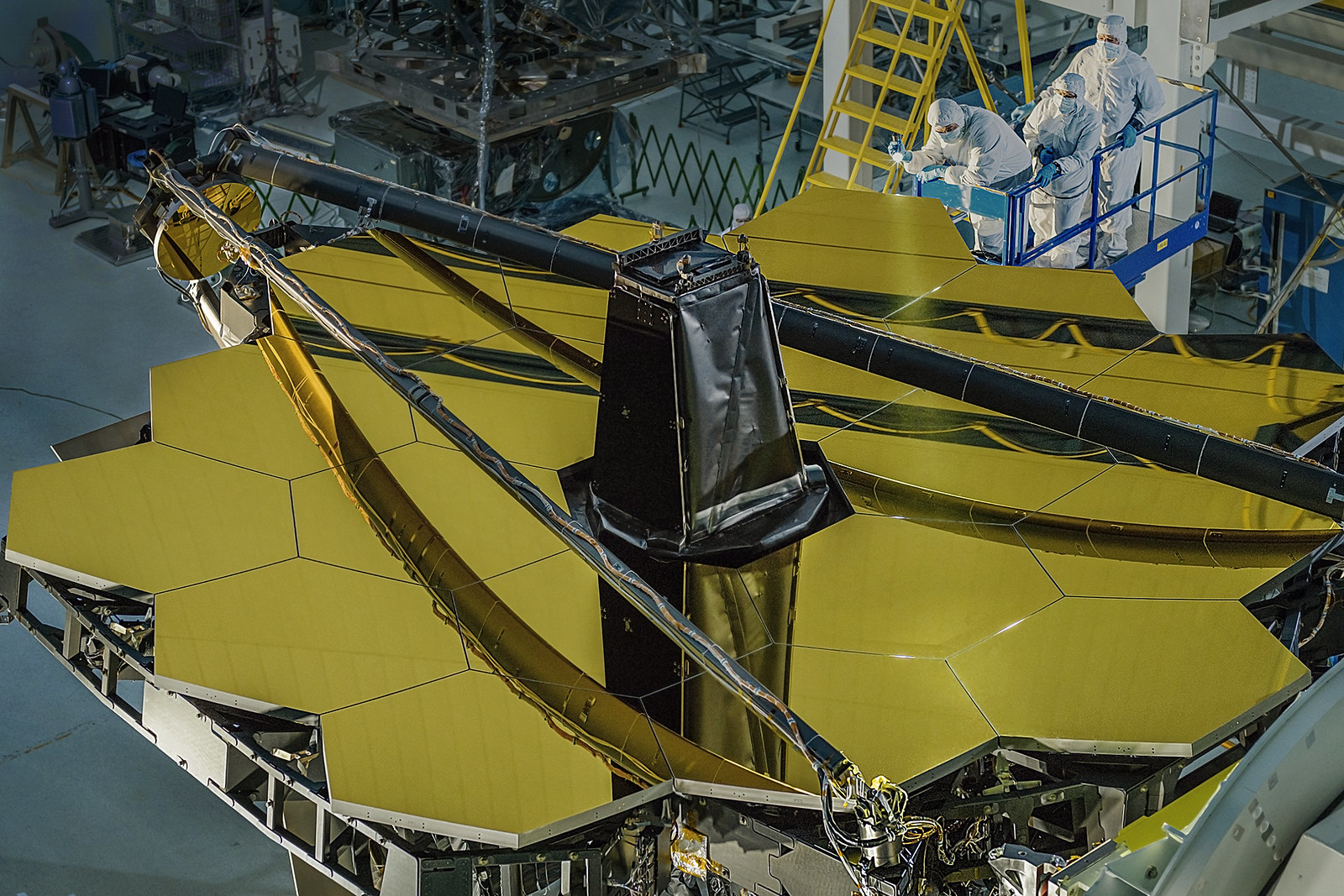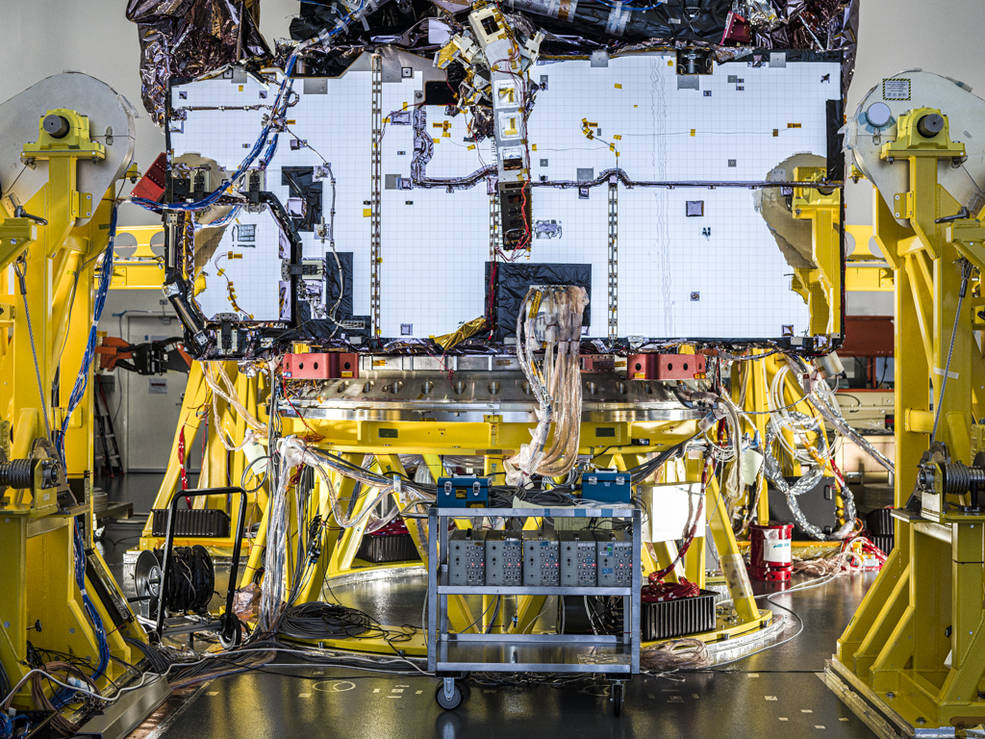
's James Webb Telescope, also referred to as JWST or Webb, has completed its final functional tests. The operation of the internal electronics and communication systems was checked on the spacecraft. The tests should bring the JWST into space in October 2021 closer. The flight has been postponed for 13 years.
The main task of the tests is to confirm that everything is functioning properly under conditions close to real flight.
How were the final tests
The tests of electrical systems and communications were completed in February this year. Before testing, specialists conducted a full scan of all nodes.
To simulate the situation of the exchange of space data with the Earth, the telescope was placed in a clean room at Northrop Grumman Space Systems in California. The total duration of testing work was 17 days. During this time, technicians sequentially turned on all Webb components and performed the planned operations.

Specialists are focused on the functionality of the spacecraft's electronic components and four scientific instruments.
What tools have you tested?
Near Infrared Camera
This is the main tool for Webb imaging. It recognizes infrared wavelengths from 0.6 to 5 microns. The camera will be able to see light from the earliest stars and galaxies, the young stars of the Milky Way and the Kuiper belt.
Near Infrared Spectrograph
An instrument is used to study the scattering of light from an object. Spectrum analysis will provide information about the physical data of the object: temperature, mass, chemical composition.
Mid-infrared device
This device sees wavelengths from 5 to 28 microns. It can see red shifted light from distant galaxies, re-emerging stars, and faint comets.
Precision Aiming Sensor
This tool will be used to detect the first light, to determine the characteristics of exoplanets.
What was modeled in the end
- Webb Data Exchange with Earth: Thanks to the space communications emulator, NASA was able to transmit control signals to the telescope.
- The situation of the transfer of control of the telescope from one command center to another: from the MOC at STScI in Baltimore to the reserve MOC at NASA's Goddard Space Flight Center in Greenbelt.
- Sending several adjustments to the observatory during command operations.

Once Webb is launched, it will be operated from three geographically distant locations on NASA's Deep Space Communications Network at:
- Goldstone (California, USA),
- Madrid (Spain),
- Canberra (Australia).
The signals will then be sent millions of kilometers to an orbiting observatory. NASA's satellite tracking and relaying network will help keep in touch with Webb.
We reported a few months ago that James Webb has successfully completed acoustic and vibration tests. Then the tests confirmed that the observatory is able to "survive" the deafening noise, destructive rumble and other colossal vibrations that occur during takeoff.
All planned final tests have now been completed successfully. In the summer, specialists prepare to deliver Webb to the launch site.
What is the mission of the telescope

The main mission of the telescope is to find out what the universe was like after the Big Bang. Webb is capable of observing galaxies 13 billion light years from Earth.
The telescope is planned to be sent into space from the Arianespace ELA-3 launch complex at the cosmodrome located near Kourou in French Guiana.
The launch of the telescope into orbit is scheduled for October 31, 2021. The launch of the project was postponed for 13 years. During this time, the total cost of the project has grown to $ 10 + billion.
The creators of Webb promise that it will be the most complex and powerful of all spacecraft launched into space. With mid-to-near infrared detectors, JWST will be able to look inside dust clouds where stars are forming.
